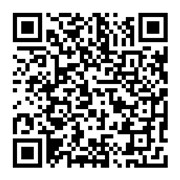whatever用法_whatever用法及固定搭配
一. 人称代词
例如,比较“My sister speaks English as well as me/I。”(口语中常用me)和“My sister speaks English as well as I do。”(此时必须用主格I)。
二. 物主代词
物主代词包括形容词性物主代词和名词性物主代词,使用时需与所指名词在人称、数和性别上保持一致。
例如,“The waiters offered their food to the homeless man。”(单数阳性名词和单数阴性名词连用作主语时,如前有every、each修饰,谓语动词用单数,代词用his。)
形容词性物主代词相当于形容词,只能作为名词或动名词的定语。如:“This is our classroom。”和“Would you mind my opening the window?”
名词性物主代词则相当于“形容词性物主代词+名词”,可单独作主语、宾语或表语。它还可以与名词及of连用,构成双重所有格。
例如,“This is her coat. Mine is over there。”(这是我的和她的外套)和“Some friends of mine will attend my birthday party。”(我的一些朋友将参的生日聚会。)
三. 反身代词
反身代词通常用于enjoy、teach、hurt、buy、introduce、seat、dress、express、amuse、behave等动词以及by、for、to、of等介词后作宾语。
例如,“He was left alone at home yesterday。”和“The teacher and pupils mended the road themselves。”(老师和学生们亲自修路。)
反身代词也可作为主语的同位语,用以强调动作的执行者或强调亲自参与的动作。如:“I myself am responsible for this matter。”(我自己负责这件事。)
反身代词还有一些习惯搭配,如“for oneself”意为“为自己”,“to oneself”意为“独自地”等。
四. 指示代词
指示代词用于指代上文或下文提到的事物。指上文提到的事物时,一般用that(有时也用this);指下文将要提到的事物时,常用this或these。
例如,“He said I was lying, and that was unfair。”(他说我撒谎,这是不公平的。)以及“What I want you to remember is this:Practise makes perfect。”(我想让你记住的是:熟能生巧。)
五. 相互代词
相互代词用于表达相互关系,常用词组为each other和one another。
例如,“Let’s help each other and learn from each other。”(让我们互相帮助,互相学习。)以及“They looked at one another and laughed。”(他们互相看了看然后笑了。)
六. 疑问代词
疑问代词的单复数形式需根据所代表的人或物的单复数形式来确定。如“What he needs most is his mother's love。”(他最需要的是妈的爱。)

